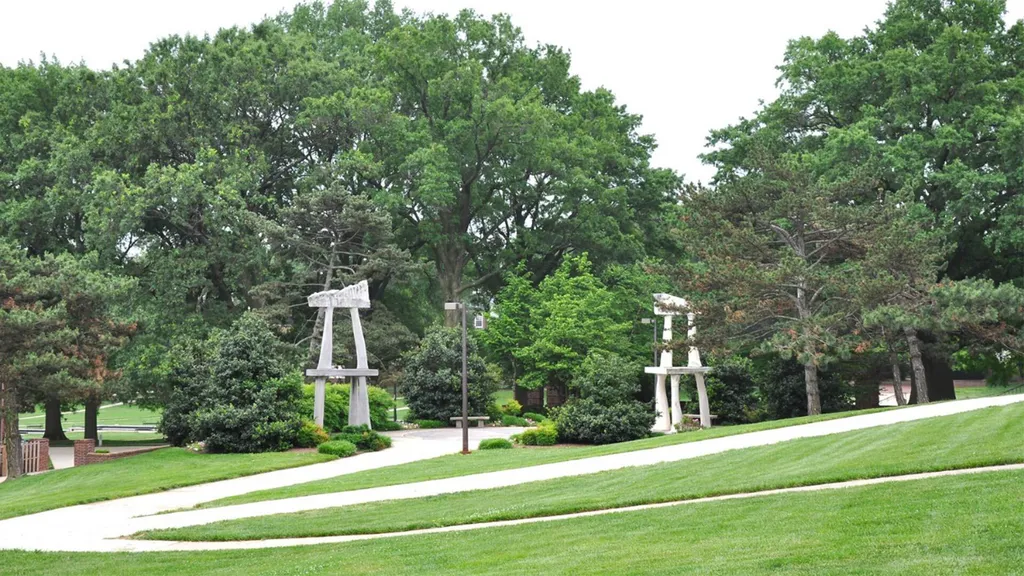- October 16, 2024
- By Sala Levin ’10
For 43 years, University of Maryland students, faculty and staff had an easy shorthand for one of the best-known rendezvous points on campus. “Meet me by that sculpture off the Mall,” a Terp could say, and that could mean only the towering, Stonehenge-like artwork called “Night and Day” that stood in the clearing between H.J. Patterson Hall and what was then Holzapfel Hall.
What was it, exactly? “Like most abstract sculpture, the artist makes it, and they hope the viewer brings their own narrative to it,” said Claudia DeMonte, an artist and professor emerita of art who was a faculty member at UMD for 33 years, including during the time of the roughly 20-foot sculpture’s installation in 1972. “It was only form, shape and texture—and people’s response to it.”

“Night and Day,” the first piece of permanent sculpture on campus, was the work of the late Kenneth Campbell, a sculptor who taught at UMD from 1968 to 1983.
“He was one of the few really great, proficient marble sculptors that did the work himself,” said DeMonte—meaning that he used a hammer or chisel to carve his vision out of stone, foregoing power tools or other technology. “To think on that scale—I was so impressed that anybody could do that and would think that big.”
Campbell was eccentric, said DeMonte. They both lived in New York City’s then-up-and-coming SoHo neighborhood, and would drive to and from campus together every week. With his late-stage David Letterman-esque beard, bowler hat and overalls, he made for “a dramatic presence—maybe a little intimidating, but he was a teddy bear,” said DeMonte. Each week, he’d bring his Dalmatians along for their car ride. “He paid more attention to the dogs than to the road,” she said. (He’d also join them in howling at the moon during their late-night walks around Manhattan.)
In 1968, Campbell began working on “Night and Day” after receiving a commission from the university for a piece of public art. The sculpture “doesn’t represent anything,” he told The Diamondback in 1971. The name of the piece came from the fact that one part of it was made from black marble and the other from white marble.
“The installation of it was terrifying,” said DeMonte. “It was cranes lifting major pieces of marble and not dropping them or hurting anyone or bumping them into one another, and getting the poles that center them right, and getting the cement to set to hold the poles.”
“Night and Day” was a landmark to generations of Terps, who passed by its central location every day on their way to and from classes. Even after Campbell retired in 1983 and died just three years later, his work endured on campus, inviting students, faculty, staff members and visitors to ponder its meaning.
That was, until 2015, when plans were underway for the Edward St. John Learning and Teaching Center to replace Holzapfel Hall. The construction site extended to the area that held “Night and Day,” and the sculpture had to be dismantled, crated and moved off-site to storage, where it remains.
Still, memories of “Night and Day” and its larger-than-life presence remain.
“I remember having tears in my eyes when it went up,” said DeMonte. “It was very emotional to see an artist live to do that. We all have dreams of what we want to do, and we don’t all get to execute everything we dream. [The university] let him do whatever he wanted with this commission. That’s wonderful, and I wish more of that existed.”
This story is part of the “Whatever Happened to…” series, which scopes out the histories and fates of aspects of the UMD campus and experience that no longer exist. Have an idea for a future subject? Email writer Sala Levin at snlevin@umd.edu.
Topics
Campus & Community